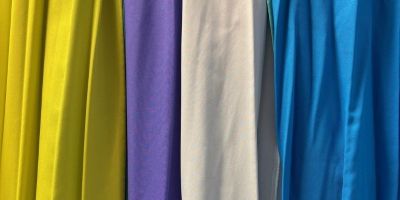"Sweet Little Qdot" featured on Angewandte Chemie cover
The Wiley flagship journal Angewandte Chemie highlighted the development of SLQ strategy for probing mechanisms of the HIV & Ebola virus receptors recognizing viral surface sugar structure.
The “sweet little Qdot (SLQ)” strategy was co-developed by Dr Yuan Guo and Dr Dejian Zhou, Wellcome Career Re-entry Fellow and her host, in collaboration with Dr Bruce Turnbull’s lab at the School of Chemistry and German colleagues.
The tetrameric viral receptor DC-SIGN and a closely related receptor DC-SIGNR bind to virus surface specific multiple mannose-containing glycans via their clustered carbohydrate-binding-domains (CRDs) which facilitate virus infection. However, the underpinning mechanisms, particularly how their CRD arrangement and orientation determine their virus binding and transfection properties are still poorly understood.
The SLQ is prepared by coating a tiny fluorescent quantum dot (Qdot) with a dense layer of sugar found on the viral surface via a novel ultra-efficient cap-exchange method. Combining
features of polyvalent weak individual ligand-binding affinity and spherical, nanoscale shape, the SLQ is an ideal probe for the CRD arrangement and orientation here: only the protein having the same facing CRDs can achieve strong multivalent binding. The SQ can provide quantitative information on the binding affinity and thermodynamics of multivalent DC-SIGN/R-sugar interactions via a rapid, sensitive Förster resonance energy transfer based ratiometric readout strategy. Importantly, the SQ not only greatly enhances the multivalent binding affinity, but also endows a unique selectivity for DC-SIGN over DC-SIGNR despite of their almost identical structure. A mechanism based on the different CRD arrangement and correlation to distinct biological roles for DC-SIGN/R has been proposed.
This work is to be reported as an advance article in Angewandte Chemie: 2016, doi: 10.1002/anie.201600593.




